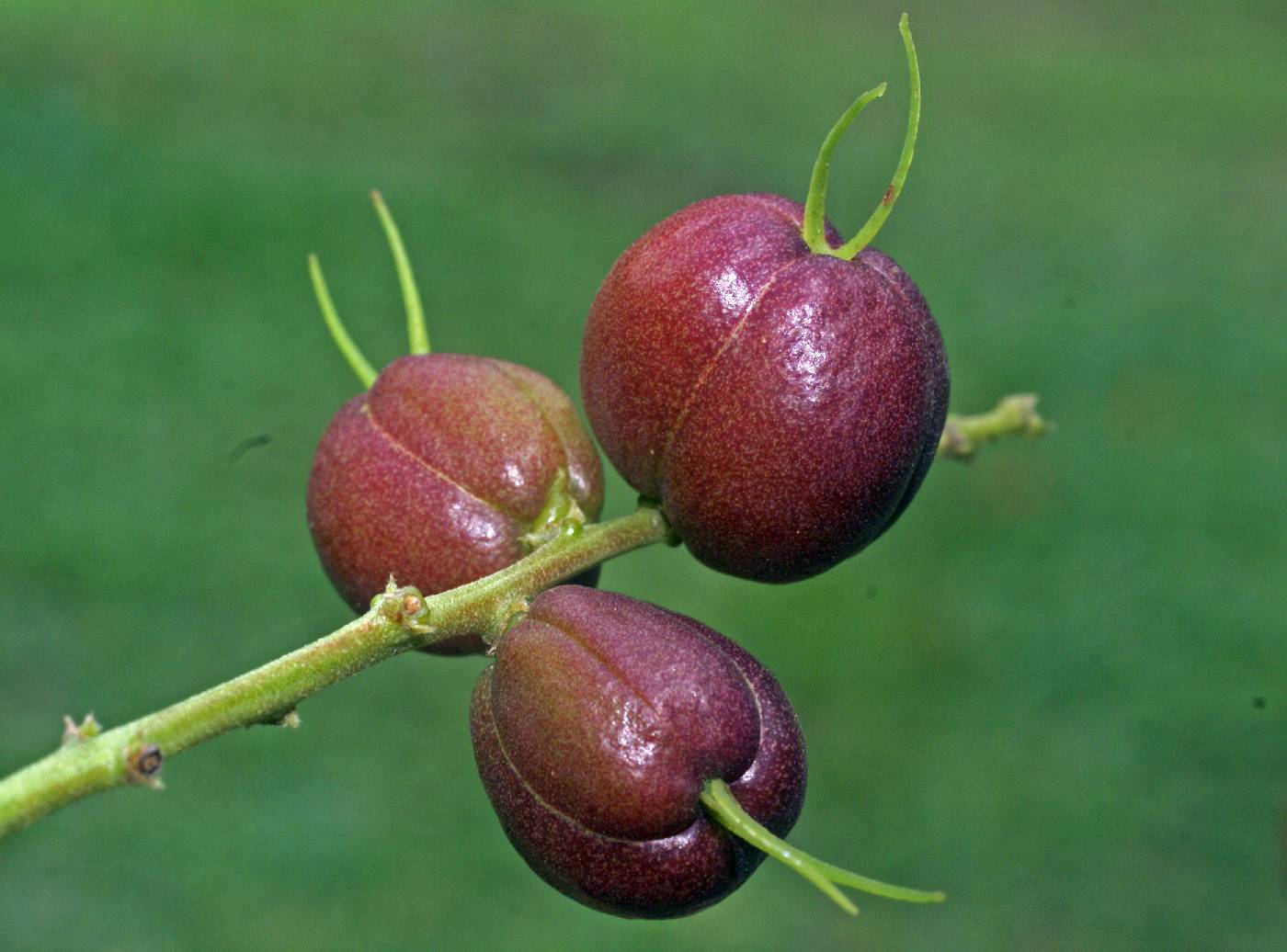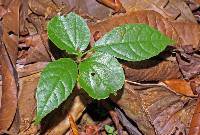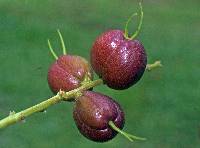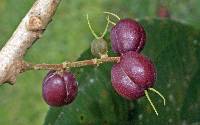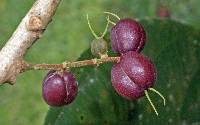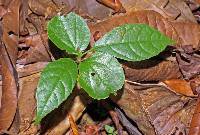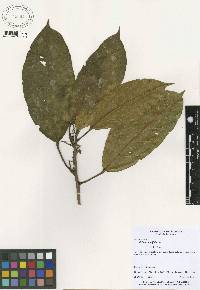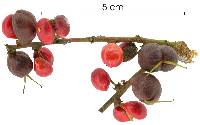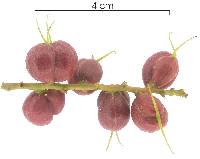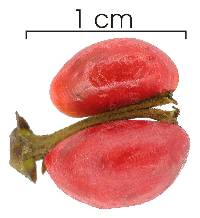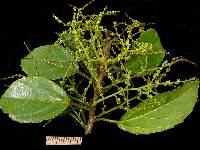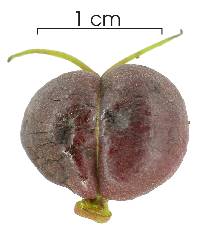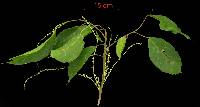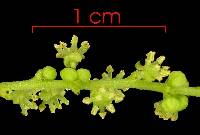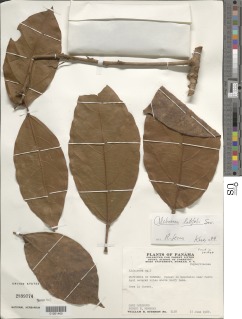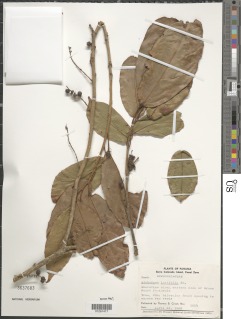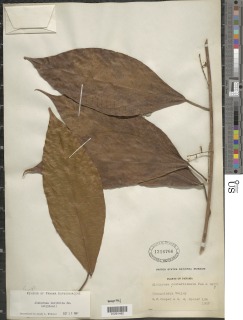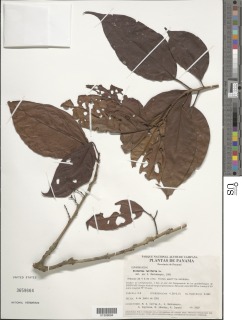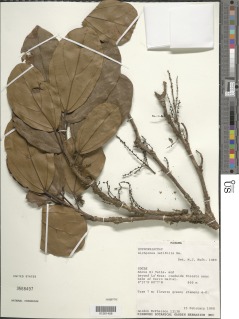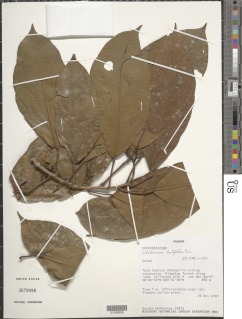

|
|
|
|
Family: Euphorbiaceae
Achiotillo, more... (es: Achiotillo)
[Alchornea cyclophylla Croizat] |
Descripción: Árbol de 5 a 20 m de alto. Tronco irregular o a veces ligeramente acanalado. Corteza exterior marrón o rojiza. Hojas simples y alternas, de 9-30 x 3-12 cm, ovadas, oblongas o elípticas, con ápice acuminado, bordes crenados o a veces enteros y base redondeada o subcordada. Las hojas son coriáceas y presentan de 2-4 glándulas en la base, visibles por el envés. Estípulas pequeñas y deciduas. Pecíolo de 2-5 cm de largo y pulvinado en ambos extremos. La especie es dioica. Inflorescencias en espigas axilares. Frutos en cápsulas bilobuladas, de 0.5-1 cm de diámetro, verdes, tornándose rojos al madurar. Los restos de los dos estigmas de la flor permanecen en la punta del fruto. Semillas con sarcotesta roja. Datos Ecológicos: La especie crece a bajas y medianas elevaciones, en bosques húmedos, muy húmedos o nubosos. En Panamá se encuentra en las provincias de Bocas del Toro, Chiriquí, Colón, Panamá y la comarca de Guna Yala. Florece y fructifica de abril a junio. Especies Parecidas: A menudo se confunde con LK alchco Alchornea costaricensis LK2 , pero en A. costaricensis las hojas son más pequeñas y presentan dos glándulas en la base. También se puede confundir con LK hassfl Hasseltia floribunda LK2 , pero en H. floribunda los frutos son bayas pequeñas. Usos: La madera es empleada para fabricar mangos de herramientas y postes de cercas. Sw., Prodr. Veg. Ind. Occ. 98. 1788 Dioecious tree, to 15 (22) m tall, ca 45 cm dbh; stems and leaves glabrate. Leaves alternate, simple; stipules minute, caducous; petioles 2.5-5 cm long; blades ovate to elliptic, acuminate, obtuse to rounded at base, 8-18 cm long and 4-8.5 cm wide (larger on juveniles), the trichomes. tufted, stellate, branched from base in vein axils below, the glands 2-4 at base in vein axils and scattered on both surfaces, the margins entire or toothed, the teeth minute, remote, gland-tipped; venation pinnate, 3-veined at base. Spikes axillary, stellate-pubescent, the flowers apetalous, the staminate axes 5-15 (30) cm long, branched many times, the lateral branches 1-3 cm long, the pistillate spikes simple or branched few times near the base, 5-20 cm long; staminate flowers subsessile; calyx lobes 2-4, to 1.5 mm long; stamens 8; pistillate flowers on stout pedicels 1-1.5 mm long; ovary stellate-pubescent; styles 2, simple, 1-2 cm long. Capsules to 11 mm long and wide, bilocular, dark purplish-brown; seeds 2, tuberculate, red, ca 6 mm long and nearly as wide. Croat 4871, 5024. Rare, in the forest; apparently more abundant elsewhere in Panama on the Atlantic slope. Seasonal behavior uncertain. Flowers mainly in April and May. The fruits mature mostly from April to June. In Puerto Rico it is reported to flower all year (Little & Wadsworth, 1964). Mexico to Panama, introduced into southern Florida; Greater Antilles. In Panama, known from tropical moist forest in the Canal Zone and Bocas del Toro, from premontane wet forest in Panama (Cerro Campana) and Colon (Santa Rita Ridge), and from premontane rain forest in Panama (summit of Cerro Jefe). Bocas Species Database Natural History Notes: Wood from this tree is used to make tool handles amongst others. Characteristics: Tree that reaches from 5 to 20 m in height. Leaves are simple and alternate. Fruits in bilobuled capsules, turning red when ripe. |
|
|
|

